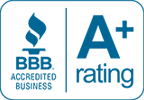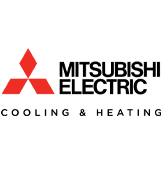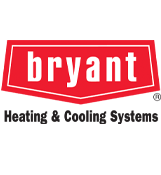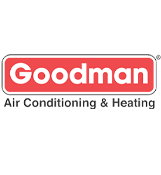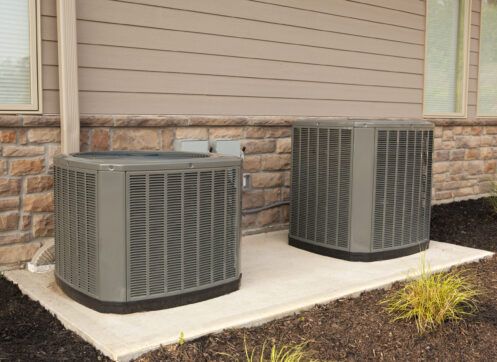
As the chilly winds start to sweep across Las Vegas, NV, it’s essential to ensure that your heat pump is primed and ready to keep you warm during the cold season. Taking the right steps now can enhance your heat pump’s efficiency and prolong its life span. Here, you’ll learn some crucial pointers about preparing your heat pump for the impending winter chill.
Part 1: Steps You Should Take
Inspect and Clean the Outdoor Unit
Over time, dirt, debris, and leaves can accumulate around the unit, obstructing airflow and reducing efficiency. We recommend gently cleaning the unit’s exterior with a hose to remove debris. Furthermore, ensure that there are no overhanging branches or shrubs nearby that might hinder proper airflow. This simple step can go a long way in maximizing your heat pump’s efficiency.
Schedule Professional Maintenance
During a maintenance appointment, a trained technician can inspect your system thoroughly, identify potential issues, and address them before they escalate. From checking refrigerant levels to lubricating moving parts, a comprehensive maintenance service will ensure that your heat pump operates effortlessly when needed. Besides, regular upkeep can prevent unexpected breakdowns and save you from the inconvenience of a malfunctioning heat pump on a chilly day.
Seal Ducts and Insulate Exposed Lines
Begin by checking your ductwork for any leaks or gaps. Sealing these areas can prevent heated air from escaping and cold air from infiltrating your living spaces. Also, consider insulating any exposed pipes, lines, or components to protect them from freezing temperatures. Well-insulated lines are less likely to crack or burst during extreme weather conditions, ensuring uninterrupted heating throughout the winter.
Adjust Thermostat Settings
During the winter, set your thermostat to a comfortable yet energy-efficient temperature. Programmable thermostats are incredibly beneficial, allowing you to schedule temperature adjustments based on your daily routine. Lower the temperature when you’re away or asleep, and program it to increase before you wake up or return home. This practice keeps you cozy, reduces energy consumption, and lowers your utility bills.
Clear Indoor Vents and Registers
To ensure adequate heat circulation, inspect these vents and make sure furniture, curtains, or other obstructions do not block them. Clear pathways around these vents allow the heat pump to operate optimally, maintaining a consistent and comfortable indoor temperature. By paying attention to this seemingly minor detail, you can significantly impact the overall efficiency of your heat pump system.
Test the Defrost Cycle
Heat pumps often have a defrost cycle in areas with colder temperatures to prevent ice buildup on the outdoor unit’s coils. As part of your winter preparation, it’s a good idea to test the defrost cycle to ensure it’s functioning correctly.
During operation, you might notice a temporary blast of cold air from your vents; this is a sign that the heat pump is in defrost mode. If you suspect any issues with the defrost cycle, it’s best to have a professional technician inspect and address the problem.
Monitor Energy Consumption
Compare your energy bills from previous winters to identify any unusual spikes in usage. Higher-than-usual energy consumption could indicate an underlying problem with your heat pump. If you notice a significant increase, consider scheduling a maintenance check to ensure your system runs optimally.
Part 2: Things You Shouldn’t Do
Don’t Ignore Strange Noises or Odors
Strange sounds like grinding, banging, or squealing might indicate mechanical problems, while unpleasant odors could suggest mold growth or electrical issues. In either case, immediate attention is necessary. Ignoring these signs can lead to more extensive damage and potentially higher repair costs.
Avoid Drastic Temperature Swings
While it might be tempting to crank up the heat to its maximum setting, drastic temperature swings can strain your heat pump and lead to inefficiency. Rapidly raising or lowering the temperature forces the heat pump to work harder, consuming more energy and potentially causing wear and tear. Instead, make gradual adjustments to give your system time to reach the desired temperature without unnecessary stress. This practice not only saves energy but also promotes the longevity of your heat pump.
Don’t Block the Outdoor Unit
Avoid placing objects, such as furniture or equipment, near the outdoor unit. Blocking airflow to the unit can diminish its efficiency and lead to poor heating performance. Similarly, avoid piling snow or ice around the unit after winter precipitation. Adequate airflow is essential for optimal heat exchange, so keep the outdoor unit clear and unobstructed.
Avoid DIY Repairs
In the age of online tutorials and easy access to information, the temptation to tackle heat pump repairs yourself might arise. However, attempting DIY repairs, especially without the necessary expertise, can lead to costly mistakes and even safety hazards.
Modern heat pump systems are complex and require specialized knowledge to diagnose and fix issues accurately. Rather than risking further damage, it’s best to leave repairs to qualified professionals who can ensure the proper functioning of your heat pump.
Don’t Neglect Filter Maintenance
Clogged or dirty filters obstruct airflow, forcing the heat pump to work harder to achieve the desired temperature. Make it a habit to check and replace filters regularly, ideally every one to three months. Clean filters enhance your heat pump’s performance and contribute to a healthier living environment.
Avoid Overexerting Your Heat Pump
While aiming for a tropical indoor climate is tempting, pushing your heat pump to maintain extremely high temperatures can strain the system. Doing this can increase energy consumption and potential wear and tear on components. Aim for a comfortable temperature that doesn’t put excessive stress on your heat pump, and consider using blankets or layers to stay cozy without relying solely on high thermostat settings.
Avoid Neglecting Thermostat Batteries
A failing thermostat battery can disrupt your heating system’s operation and lead to inaccurate temperature settings. Don’t forget to replace thermostat batteries regularly, ideally before the winter season begins. This simple step ensures that your thermostat communicates effectively with your heat pump, allowing for precise temperature control and reliable performance.
Don’t Overlook the Importance of Humidity
Overly dry indoor air can make your home feel colder than it is, leading to the temptation to increase the thermostat setting. Conversely, excessive humidity can lead to discomfort and potential mold growth. Invest in a humidifier to maintain an optimal humidity range of around 30% to 50%. Balancing humidity and temperature can enhance your heat pump’s efficiency and your overall comfort.
Preparing your heat pump for the winter in Las Vegas involves a combination of proactive measures and mindful practices. With these guidelines in mind, you can confidently embrace the winter season, knowing that your heat pump is ready to keep you warm and cozy.
At Polar Air & Heating, Inc., we are dedicated to not only providing you with valuable information to maintain your heat pump but also offering a range of services that go beyond installations. Our commitment to your comfort extends to emergency repairs, AC maintenance and replacements, and air filtration solutions. We are committed to your convenience and ready to assist you in all aspects of HVAC care.
Contact us at Polar Air & Heating, Inc. today and experience exceptional HVAC services wherever you’re located in the Las Vegas area.





